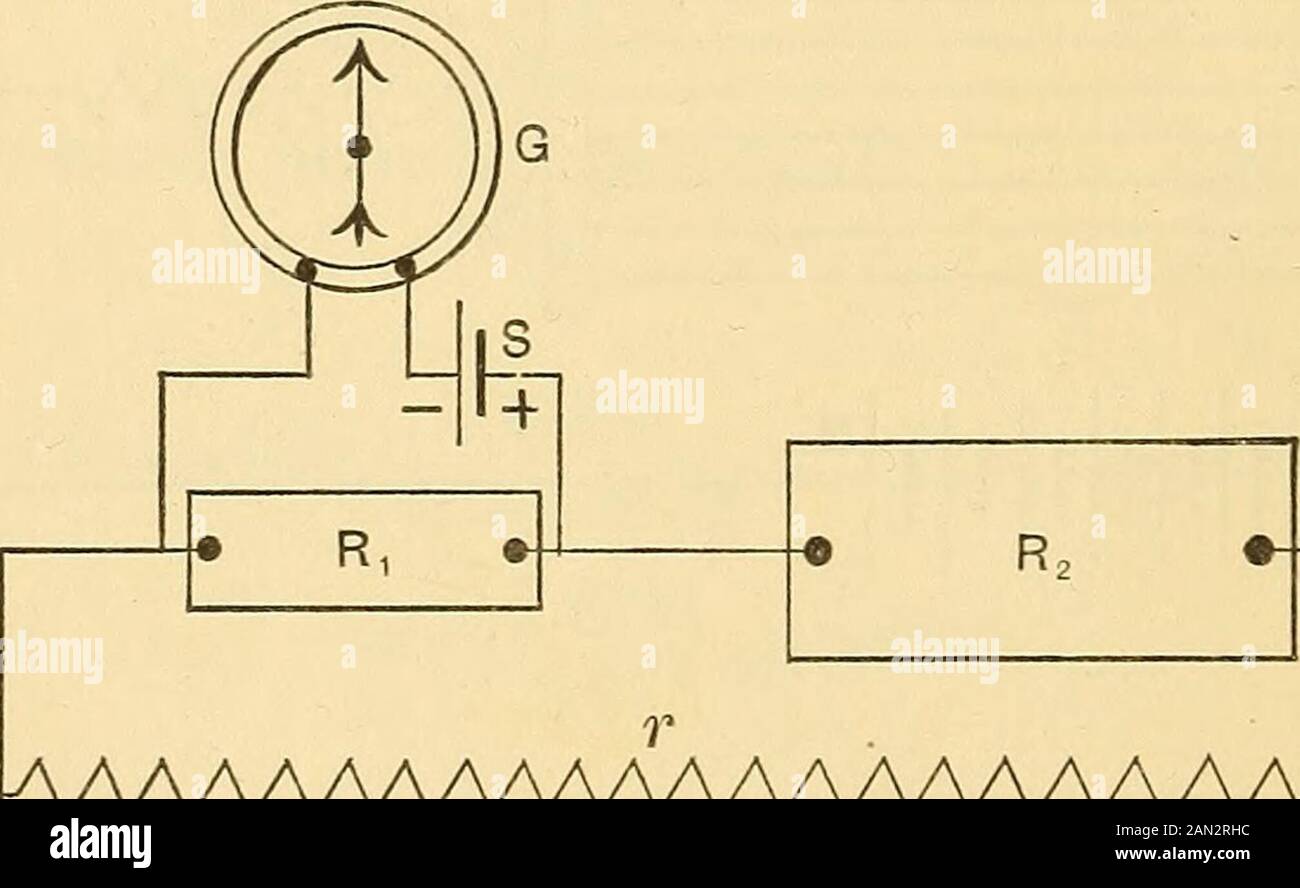Electrical measurementsA laboratory manual . es the current measured by theelectrolytic cells Fand V, or in the ratio of the con-ductances of the two groups of wires r and r^. G- is the galvanometer or other current measurer to becalibrated. 82. Measurement of Current by Means of aStandard Cell. â A standard Clark cell will be de-scribed later (Art. 85). For the present, it is onlynecessary to say that a Carhart-Clark cell gives a con-stant E.M.F. of 1.440 volts at 15° C. (Latimer-Clarkcell, 1.434 V.) Such a cell may be employed in connec- ITO ELECTRICAL MEASUREMENTS. tion with standard resis

Image details
Contributor:
The Reading Room / Alamy Stock PhotoImage ID:
2AN2RHCFile size:
7.1 MB (149.3 KB Compressed download)Releases:
Model - no | Property - noDo I need a release?Dimensions:
2016 x 1239 px | 34.1 x 21 cm | 13.4 x 8.3 inches | 150dpiMore information:
This image is a public domain image, which means either that copyright has expired in the image or the copyright holder has waived their copyright. Alamy charges you a fee for access to the high resolution copy of the image.
This image could have imperfections as it’s either historical or reportage.
Electrical measurementsA laboratory manual . es the current measured by theelectrolytic cells Fand V, or in the ratio of the con-ductances of the two groups of wires r and r^. G- is the galvanometer or other current measurer to becalibrated. 82. Measurement of Current by Means of aStandard Cell. â A standard Clark cell will be de-scribed later (Art. 85). For the present, it is onlynecessary to say that a Carhart-Clark cell gives a con-stant E.M.F. of 1.440 volts at 15° C. (Latimer-Clarkcell, 1.434 V.) Such a cell may be employed in connec- ITO ELECTRICAL MEASUREMENTS. tion with standard resistances to measure currents inamperes. The method consists in balancing the E.M.F. of astandard cell against the fall of potential over the wholeor a part of a known resistance through which the cur-rent to be measured flows. Let r (Fig. 82) be the known resistance placed in themain circuit in which flows the current to be measured. This resistance should consist of a metallic conductorcapable of carrying the current without undue heating.. A/vVV^/vVV^AAAAAVVVAA/^^^ << Fig. 82. If it is so mounted that it can be immersed in keroseneor oil the temperature can be kept nearly constant; and, what is quite as important, it can be measured accurately.Two resistance boxes of high resistance are thenplaced in a derived circuit as a shunt to the resistance r.From the terminals of one, as Ri, another derived cir-cuit is set up containing a standard cell S and a sensitivegalvanometer Gr. This circuit should also contain akey. The poles of the cell must be turned so that theP.D. over Ri shall be opposed to the E.M.F. of the cell-The balance is then made by adjusting R^ or R2 till no MEASUBEMENT OF CURRENT. 171 current flows through the galvanometer on closing thekey in its circuit. We have then E, : Bi + R, : : 1.44 : E, where E is the P.D. between C and D.Then ^=1.44^1+^. If the temperature of the standard cell is not 15° C. acorrection must in general be made.Finally, ^_ 1^ R,